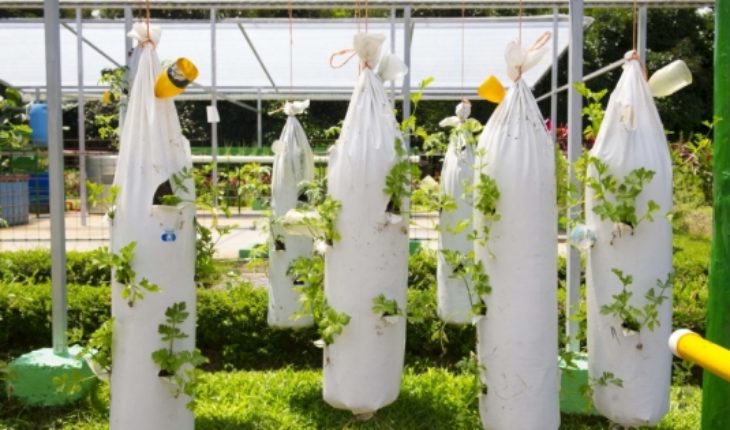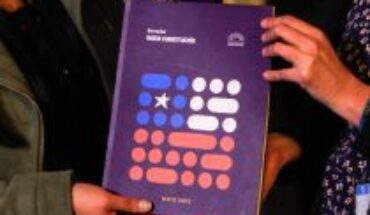one of the main concerns of many countries at present is the growing or constant population. It is estimated that you for the year 2030, 60% of the world’s population will live in cities, which means a major challenge for Governments and the way how it will do to feed them. In addition, this will be affected by climate change, droughts and floods that will cause the interruption of the supply of nutrients between the countryside and the city.
Faced with this panorama, recycling agriculture is taking stronger every day in Latin America and consists of a series of alternative production systems for small spaces and for purposes of self-sufficiency, also combined with waste management to the give a second use for materials that otherwise would end up polluting rivers or buried.
Participants in the technical field trips that will take place in the framework of the I Latin American Congress on sustainability, ecology, and evolution (SEE), which will be held from 26 to 29 September in Costa Rica, can see examples of this type of agriculture.
But where was born the current recycling agriculture? According to Alex Pacheco, EARTH University Professor and promoter of the concept in Latin America, it all began in the city of Detroit in the United States following the crisis of the automotive industry, which led the city to file for bankruptcy in 2013.
“When these people is unemployed and the old factories are abandoned, was the opportunity to use this infrastructure for agricultural purposes. Investment in agricultural systems, using new materials was very expensive, then they start to reuse materials that already had as containers. Then they began to work with plastics and so on with other materials”, explained Pacheco.
Currently, urban agriculture – which includes the concept of recycling agriculture – has allowed to feed the population but also the development of the city, providing employment options for its citizens and boosting the economy not only with the sale of products but because the gardens also became a tourist destination.
In the case of Latin America cities like Medellin and Bogotá, in Colombia, as well as Guayaquil, in Ecuador, have seen this trend an option to promote food production. There are also similar efforts in countries such as Belize, Costa Rica and Haiti, where the communities not only benefit from urban production systems and urban peri that provide them a diet varied for the benefit of their health, but also at affordable prices for its economy.
Groves located in old cars and containers decorated artistically taken the landscapes of these cities, giving it an aesthetic value to the city, and even tours are carried out. But, above all, favoring the practices for the environment.
However, due to the availability of soil for planting that exists in large cities, recycling agriculture uses recyclable materials such as plant pots, washing tanks, tires, bicycles and even vehicles, are involved artistically to give you a pleasant atmosphere to the place.
That Yes, before using any material will have to determine what was its first use. He is not recommended to use electronic waste as computers, or those who have heavy metals in their composition, such as batteries or electrical circuits. Nor materials that had been in contact with lead.
In addition, materials that have been exposed to biological contamination (the case of hospital or medical waste), much less that they have come into contact with chemicals such as containers of disinfectants, chlorine, herbicides, on its first use, are not recommended pesticides, gasoline, solvents and other oil derivatives.
“In fact, some containers have a label which specifies that they cannot be reused because of its original goal. It is not only because these toxic substances can pass plants and then to the food, but because they can also contaminate water”, said Pacheco.
How to start recycling agriculture?
Defined once the container for planting a substrate is required. In the absence of land, it may be a mixture of shells of peanuts, coconut, husk rice or coarse sand.
Another option is to grow the vegetables on systems using water enriched with soluble fertilizer. According to the United Nations Organization for food and Agriculture (FAO), a micro-garden of one square meter consumes less than three litres of water a day and this can come from rain, for example.
It should be noted that the Agriculture of recycling also allows you to take advantage of vertical space to play with the placement of the various pots and the principle of reuse not only applies in terms of vessels or containers. The concept promotes the use of fertilizer from manure of animal or compost made of them waste organic from of the home.
According to Pacheco, the crops that are better adapted to this concept of recycling agriculture are the vegetables of leaf and fruit, medicinal plants and the aromatic. In general, plants short cycles. “Potatoes can be planted, but it is more difficult. This system is ideal for lettuce, chives, basil, cucumber, eggplant, cilantro, thyme, mint, oregano and Rosemary,”he said.
For its part, FAO ensures that a micro-garden of one square metre can produce 30 kg of tomatoes per year or 36 pieces of lettuce every 60 days or 100 onions every 120 days, thus generating benefits environments and social, since apart from self-sufficiency to consumption family, the gardens can become a community activity where residents agree with the maintenance of the productive system, at the same time they share among themselves. Or sold.
That is the case of Senegal, where studies indicate that only 35% of the produce from the garden goes to the household consumption, while the remaining 65% is sold. Even the researchers came to calculate that a micro-garden of 10 square meters can generate income ranging from US$ 15 to US$ 30 per month.
But on a broader scale, the recycling agriculture has another important benefit: adaptation to climate change. A multifunctional management of the landscape that integrates agriculture and forest cover will help to make cities more resilient.
translated from Spanish: Recycling agriculture will allow feed big cities
August 24, 2018 |





